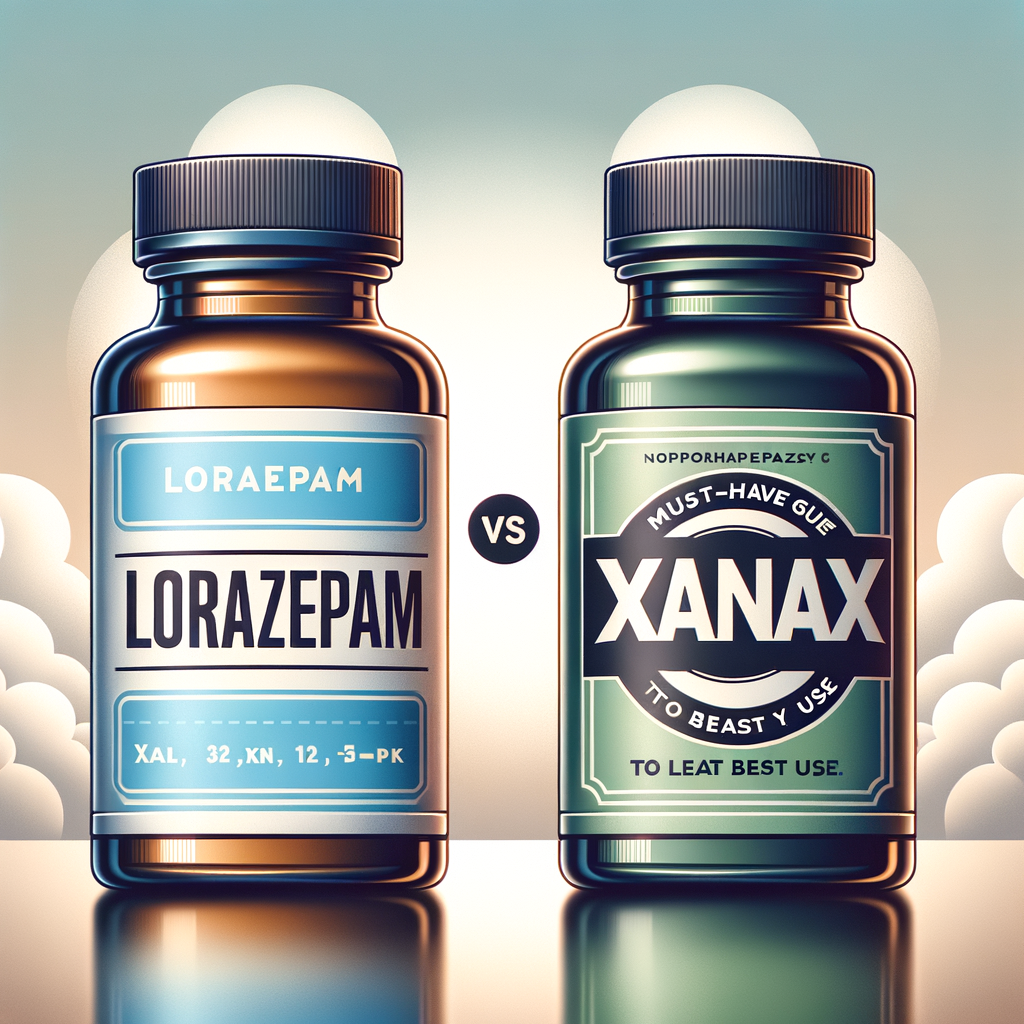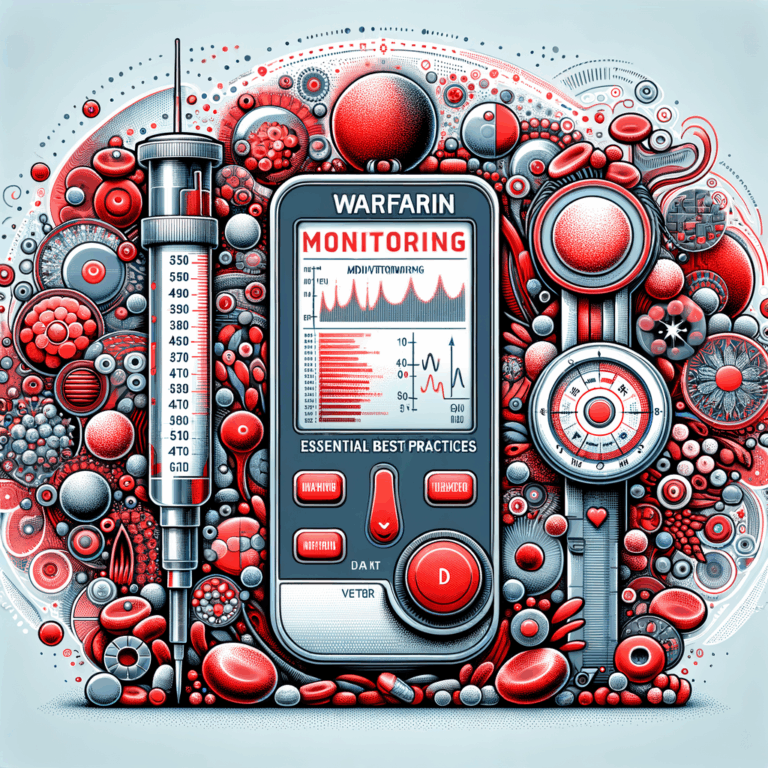
- Understanding the Basics: What Are Lorazepam and Xanax?
- How Benzodiazepines Work
- Key Differences: Lorazepam vs Xanax
- Onset and Duration
- Potency and Half-Life
- Metabolism and Drug Interactions
- Addiction and Withdrawal Risks
- Indications: When Doctors Choose One Over the Other
- Acute Panic and Situational Anxiety
- Generalized Anxiety Disorder and Sustained Relief
- Sleep Disturbance and Preoperative Use
- Dosage and Administration: Practical Guidance
- Special Populations: Elderly and Those with Liver Issues
- Side Effects: What to Expect
- Serious Risks
- Dependence, Tolerance, and Withdrawal
- Safe Discontinuation Strategies
- Comparing Effectiveness: What Studies Say
- Practical Tips for Patients
- Questions to Ask Your Doctor
- Alternatives and Complementary Approaches
- Lifestyle Measures That Help
- Cost and Access Considerations
- Legal and Safety Issues
- Case Scenarios: Choosing Between Lorazepam and Xanax
- Case 1: Sudden Panic in Young Adult
- Case 2: Chronic Worry in an Older Adult
- Monitoring and Follow-Up
- Summary: Choosing the Right Drug for You
- Frequently Asked Questions (FAQs)
- 1. Can I take lorazepam and Xanax together?
- 2. How quickly do withdrawal symptoms start after stopping Xanax or lorazepam?
- 3. Are there safer long-term alternatives to benzodiazepines?
- 4. Can pregnant or breastfeeding people take these medications?
- 5. Will these drugs show up on drug tests?
- 6. Can I drive after taking lorazepam or Xanax?
- 7. What should I do if I miss a dose?
- 8. Can benzodiazepines worsen my depression?
- 9. How do clinicians decide between lorazepam and Xanax?
- 10. Are there genetic tests to guide benzodiazepine prescribing?
- References
Understanding the Basics: What Are Lorazepam and Xanax?
Lorazepam and Xanax belong to the benzodiazepine class. They act on the brain’s GABA receptors to calm excessive nerve activity. Doctors commonly prescribe both for anxiety, panic disorders, and short-term sleep problems.
Despite similar uses, the two drugs differ in chemistry, onset, and duration. Therefore, you must understand those differences to use them safely. This guide compares Lorazepam vs Xanax to help you and your clinician choose wisely.
How Benzodiazepines Work
Benzodiazepines increase the effect of the neurotransmitter GABA. As a result, neurons fire less, reducing anxiety and muscle tension. They also produce sedative, anticonvulsant, and muscle-relaxant effects.
Most benzodiazepines share core actions, yet each drug produces a unique balance of onset, intensity, and duration. That balance affects suitability for specific conditions and patients.
Key Differences: Lorazepam vs Xanax
Onset and Duration
Xanax (alprazolam) acts fast. People often feel relief within 15 to 30 minutes. However, its effects fade sooner. That short action makes it useful for sudden panic attacks.
Lorazepam (Ativan) takes slightly longer to act. It typically works within 30 to 60 minutes. Yet, it stays active longer. Thus, lorazepam suits generalized anxiety and sleep issues better.
Potency and Half-Life
Xanax has high potency and a shorter half-life. Its half-life ranges from 6 to 12 hours. Conversely, lorazepam’s half-life sits between 10 and 20 hours. That longer half-life fosters steadier symptom control.
Consequently, patients may prefer lorazepam when they need consistent relief over many hours. Meanwhile, Xanax may suit those needing rapid but short-lived control.
Metabolism and Drug Interactions
Xanax undergoes extensive liver metabolism via CYP3A4 enzymes. Thus, other drugs that inhibit or induce CYP3A4 can alter Xanax levels. Examples include certain antibiotics, antifungals, and antiretrovirals.
Lorazepam metabolizes mainly through conjugation. That pathway produces fewer interactions. As a result, lorazepam often proves safer for older adults and patients with liver disease.
Addiction and Withdrawal Risks
Both drugs can cause dependence with prolonged use. However, Xanax’s rapid onset and short action may increase misuse risk. People often chase the quick relief by taking doses more frequently.
Lorazepam also produces withdrawal symptoms, but they may emerge more gradually. Still, stopping either medication abruptly can trigger dangerous withdrawal, including seizures. Always taper under medical supervision.
Indications: When Doctors Choose One Over the Other
Acute Panic and Situational Anxiety
Clinicians often prefer Xanax for acute panic attacks. It reduces severe symptoms quickly. When anxiety spikes suddenly, Xanax offers fast relief.
However, doctors caution against regular use for panic. They aim for targeted short-term use or as a bridge to longer-term therapies.
Generalized Anxiety Disorder and Sustained Relief
For ongoing anxiety, many clinicians favor lorazepam. Its longer action provides steadier symptom control throughout the day or night. Consequently, patients experience fewer peaks and troughs.
Still, most guidelines encourage alternatives. Cognitive behavioral therapy and SSRIs often offer safer long-term results.
Sleep Disturbance and Preoperative Use
Lorazepam proves useful for sleep due to its sedative effects and longer duration. Doctors also use it frequently before medical procedures to reduce anxiety.
Xanax may aid sleep in cases of nighttime panic. Yet, because it wears off faster, it may not prevent early morning awakenings.
Dosage and Administration: Practical Guidance
Always follow a prescriber’s instructions for dosing. The dose varies based on age, weight, and medical history. Clinicians typically start low and adjust slowly.
Below is a simplified comparison of common starting doses. This table does not replace medical advice.
| Medication | Common Starting Dose (Adults) | Typical Use |
|---|---|---|
| Xanax (alprazolam) | 0.25–0.5 mg three times daily | Acute anxiety, panic attacks |
| Lorazepam (Ativan) | 0.5–1 mg two to three times daily | General anxiety, pre-procedure, insomnia |
Special Populations: Elderly and Those with Liver Issues
Older adults show increased sensitivity to benzodiazepines. They face higher risks of falls and cognitive impairment. Therefore, clinicians usually start at lower doses.
As mentioned, lorazepam undergoes less liver metabolism. Hence, doctors often pick it over Xanax for patients with liver disease. However, they still exercise caution and reduce dosage.
Side Effects: What to Expect
Both drugs share common side effects. These include drowsiness, dizziness, and slowed reflexes. Memory problems and impaired coordination also occur. The risk increases with higher doses.
Furthermore, some people experience paradoxical reactions like increased anxiety or agitation. Although rare, such reactions need immediate medical attention.
Serious Risks
Benzodiazepines can depress breathing, especially when combined with opioids or alcohol. This interaction can become life-threatening. Never mix these substances without explicit medical guidance.
Additionally, long-term use may worsen cognitive function and increase dementia risk in older adults. Studies show mixed results, but clinicians generally recommend short-term use when possible.
Dependence, Tolerance, and Withdrawal
Dependence can develop within weeks of regular use. Your body adapts, and you may need higher doses to achieve the same effect. This phenomenon, called tolerance, drives up the dose for relief.
Withdrawal symptoms range from mild anxiety and sleep problems to severe seizures. The severity depends on dose, duration, and drug half-life. Tapering the dose slowly reduces withdrawal risk.
Safe Discontinuation Strategies
Doctors taper benzodiazepines gradually. They often switch patients to a longer-acting agent to ease withdrawal. For instance, clinicians might move someone from Xanax to diazepam, then reduce the dose slowly.
Behavioral therapies also support discontinuation. CBT helps address underlying anxiety and decreases relapse risk. Combining psychotherapy with a structured taper offers the best outcomes.
Comparing Effectiveness: What Studies Say
Research often shows both drugs relieve anxiety effectively in the short term. However, long-term benefits decline as dependence grows. Thus, many guidelines limit benzodiazepine use to short durations.
Some trials suggest lorazepam produces steadier symptom control. Other studies show Xanax provides quicker relief for panic. Therefore, the “best” choice depends on your symptoms and treatment goals.
Practical Tips for Patients
Always take benzodiazepines exactly as prescribed. Avoid sudden dose changes. Carry a medication list to inform all your healthcare providers.
Do not drive or operate heavy machinery until you know how the drug affects you. Alcohol interactions can intensify sedation and respiratory depression. Avoid combining these substances.
Questions to Ask Your Doctor
- Why do you recommend lorazepam or Xanax for me?
- What dose should I start with?
- How long should I take this medication?
- What side effects should I watch for?
- How will we stop the medication safely?
Alternatives and Complementary Approaches
Health professionals often recommend non-drug options first. Cognitive behavioral therapy (CBT) offers long-term anxiety reduction without medication risks. Mindfulness and relaxation techniques also help.
For chronic anxiety, doctors may prefer SSRIs or SNRIs. These antidepressants show better outcomes for long-term management. They require weeks to take effect but pose less dependence risk.
Lifestyle Measures That Help
Regular exercise reduces baseline anxiety. Good sleep hygiene also improves mood and resilience. Additionally, limit caffeine and nicotine, both of which can worsen anxiety symptoms.
Support groups and stress-management classes provide social and practical tools. Combining these measures with short-term medication offers balanced care.
Cost and Access Considerations
Generic forms of both drugs make them affordable. Insurance coverage varies, but many plans cover generic alprazolam and lorazepam. Local clinics and community health centers may offer help for low-income patients.
However, cost should not drive unsafe decisions. Never switch or stop medication without consulting your prescriber. They can help find affordable, safe alternatives if cost becomes an issue.
Legal and Safety Issues
Both lorazepam and Xanax appear on controlled-substance lists. Laws differ by country and state, but prescriptions may require special handling. Keep medications in their original containers and store them securely.
Sharing prescription drugs is illegal and dangerous. Misuse raises overdose and dependence risks. Dispose of unused medication through take-back programs if available.
Case Scenarios: Choosing Between Lorazepam and Xanax
Case 1: Sudden Panic in Young Adult
A 25-year-old experiences sudden panic attacks that start during work. He needs fast relief to regain function. In such cases, clinicians might prescribe Xanax for immediate rescue, with therapy to address triggers.
However, the prescriber should limit use and consider long-term options like CBT or an SSRI. They must also educate the patient about dependence risks.
Case 2: Chronic Worry in an Older Adult
A 70-year-old struggles with ongoing anxiety and insomnia. The clinician worries about liver function and fall risk. So, they may choose lorazepam at a low dose, or they may try an SSRI first.
The goal here is minimal effective dose for the shortest time. The clinician will schedule regular follow-ups to monitor side effects closely.
Monitoring and Follow-Up
Regular follow-up visits help detect side effects, tolerance, and misuse early. Blood tests may monitor liver function if other meds interact with benzodiazepines. Cognitive or balance changes need prompt evaluation.
Clinicians should reassess the ongoing need for benzodiazepines every few weeks. If symptoms improve, they should plan a taper. If symptoms persist, they may change the treatment strategy.
Summary: Choosing the Right Drug for You
In short, Xanax works fast and suits acute panic. Lorazepam acts longer and gives steadier relief. Both carry risks of dependence and withdrawal. Therefore, clinicians recommend the lowest effective dose for the shortest time.
Non-drug therapies and some antidepressants offer safer long-term options. Your clinician will balance symptom control against safety and lifestyle needs. Discuss your priorities and concerns openly to find the best plan.
Frequently Asked Questions (FAQs)
1. Can I take lorazepam and Xanax together?
Generally, doctors avoid combining benzodiazepines. Doing so increases sedation and respiratory risk. If you think you need both, speak with your prescriber for safer alternatives.
2. How quickly do withdrawal symptoms start after stopping Xanax or lorazepam?
Withdrawal timing depends on half-life. Xanax withdrawal may begin within 24 to 48 hours. Lorazepam withdrawal often starts within 2 to 7 days. Individual factors affect timing.
3. Are there safer long-term alternatives to benzodiazepines?
Yes. SSRIs, SNRIs, and CBT suit long-term anxiety care. They reduce dependence risks. Your clinician can tailor a regimen that minimizes benzodiazepine exposure.
4. Can pregnant or breastfeeding people take these medications?
Both drugs carry risks during pregnancy and breastfeeding. Doctors weigh those risks against benefits. They often consider alternatives before prescribing benzodiazepines during pregnancy.
5. Will these drugs show up on drug tests?
Yes. Standard drug tests may detect benzodiazepines. Detection windows vary by drug and testing method. Inform testing authorities if you have a valid prescription.
6. Can I drive after taking lorazepam or Xanax?
Do not drive until you know how the drug affects you. Both medications can impair reaction time and judgment. Many people avoid driving for at least 24 hours after a dose, depending on effects.
7. What should I do if I miss a dose?
Take the missed dose as soon as you remember unless the next dose is near. Do not double up to catch up. If unsure, follow your prescriber’s instructions.
8. Can benzodiazepines worsen my depression?
They can sometimes increase depressive symptoms, especially with heavy use. Monitor mood closely and report suicidal thoughts immediately.
9. How do clinicians decide between lorazepam and Xanax?
They consider symptom type, speed of onset needed, liver function, age, and addiction risk. They also evaluate co-medications and underlying medical conditions.
10. Are there genetic tests to guide benzodiazepine prescribing?
Some pharmacogenetic tests exist, but they play a limited role. Most choices rely on clinical factors like symptom profile and medical history.
References
- National Institute on Drug Abuse. Benzodiazepines and Opioids. https://nida.nih.gov/publications/research-reports/benzodiazepines
- American Psychiatric Association. Practice Guideline for the Treatment of Patients With Panic Disorder. https://psychiatryonline.org/doi/10.1176/appi.books.9780890424847
- FDA Prescribing Information for Xanax (alprazolam). https://www.accessdata.fda.gov/drugsatfda_docs/label/2016/018276s054s057lbl.pdf
- FDA Prescribing Information for Ativan (lorazepam). https://www.accessdata.fda.gov/drugsatfda_docs/label/2016/018276s054s057lbl.pdf (Note: check updated lorazepam label at manufacturer site)
- Ashton H. The Ashton Manual: Benzodiazepines – How They Work and How to Withdraw. https://benzo.org.uk/manual/
- McLoughlin, K. et al. “Benzodiazepine Dependence: Risks and Alternatives.” Journal of Clinical Psychiatry. (Review articles available via PubMed)



